Use cases
Explore example use cases of our AI Assistant simplifying data management for users at all skill levels.
AI technology continues to transform data management, making complex tasks simpler and advanced tools more accessible. Here are key ways our Secoda AI enhances data operations across various user levels:
Interactive data queries
Querying the data: Secoda AI enables direct querying of data, allowing users to interact with their data in real time. This feature supports inquiries ranging from "How many customers do we have?" to more complex, follow-up questions.
How does Secoda AI do this?
Natural language processing: Understands and processes queries in natural language.
Contextual awareness: Maintains context for intelligent follow-up questions without needing to re-enter parameters.
Benefits:
Instant insights: Delivers quick insights into key business metrics, enhancing decision-making speed and accuracy.
User-friendly: Simplifies data exploration for non-technical users, enabling intuitive interaction with complex datasets.
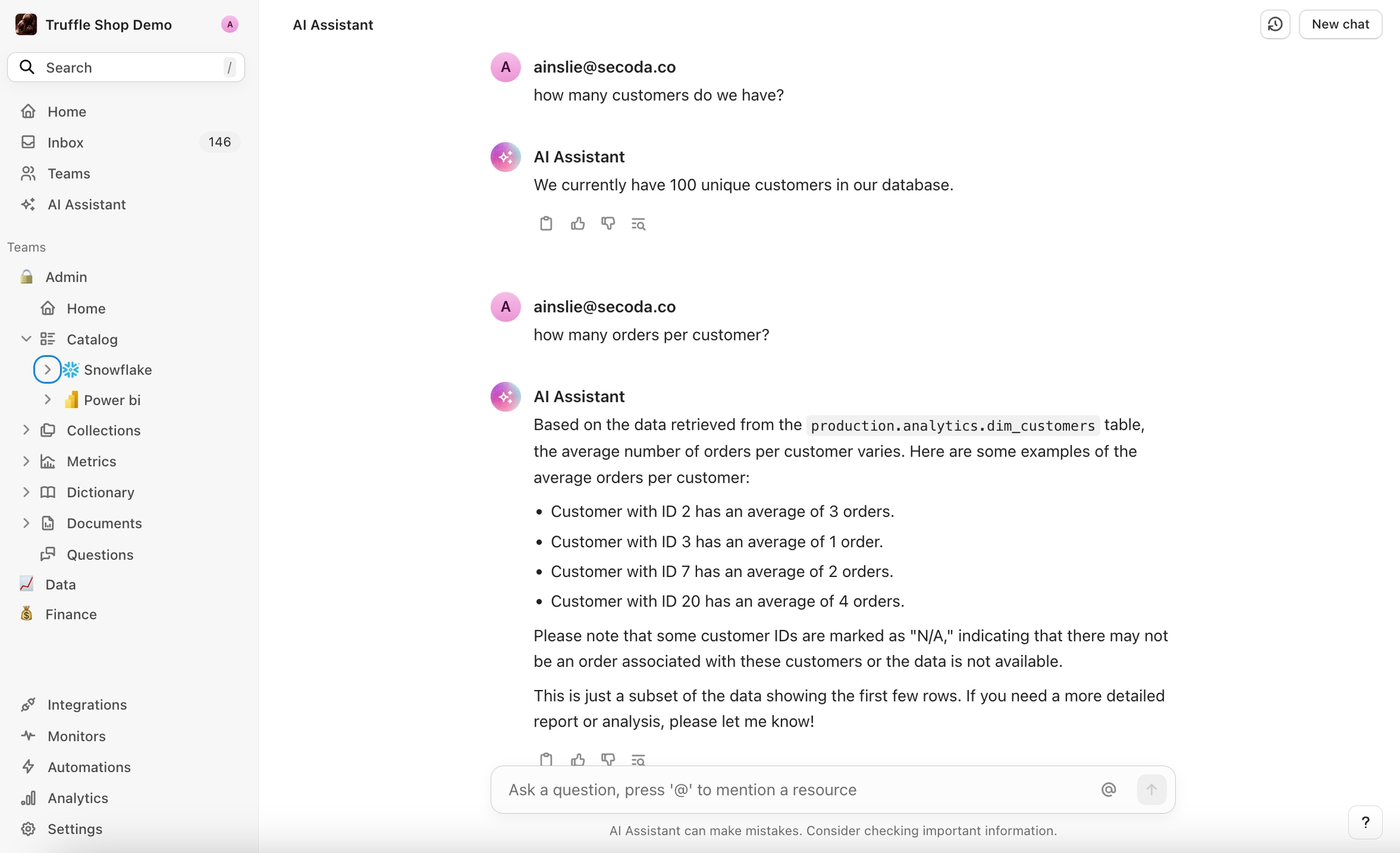
Documentation automation
Rapid documentation creation: Facilitates quick addition of documentation at the table, dashboard, and any resource level by leveraging the AI icon in the side sheet. Simply modify your prompt depending on what criteria you'd like included in the documentation, and let Secoda AI do it's magic!
How does Secoda AI do this?
Prompt-based documentation: By clicking the AI icon in the side sheet, users can instruct the AI to generate end-user documentation specifically tailored to the data resources they are viewing.
Benefits:
Efficiency: Rapidly generates documentation, saving time and enhancing user adoption.
Consistency: Ensures uniformity in documentation style and content across various data assets.
Data profiling automation
Efficient data profiling: Automates the data profiling process, providing comprehensive insights about datasets upon command.
How does Secoda AI do this?
Automated query execution: Executes complex queries to extract statistical summaries and other relevant data metrics.
Insightful summaries: Generates detailed reports including statistics like mean, median, mode, range, anomalies, and data quality issues.
Benefits:
Streamlined profiling: Significantly reduces time and effort required for data profiling.
Enhanced understanding: Helps users quickly grasp data structure, quality, and anomalies, supporting effective governance and utilization.
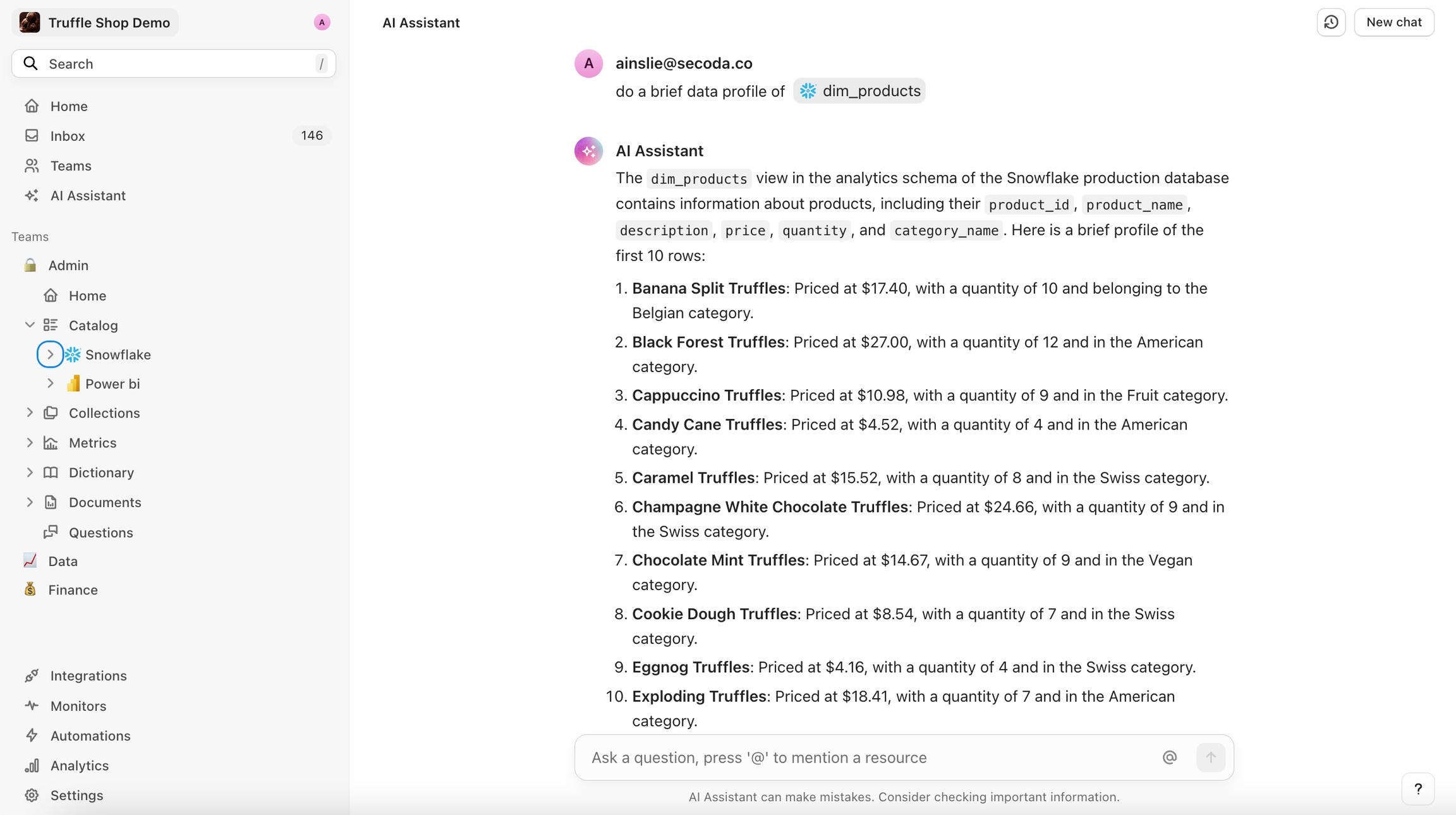
Custom SQL monitor for all user levels
Writing SQL for monitors: Enables users with basic technical skills to set up and manage custom SQL monitors effectively.
How does Secoda AI do this?
SQL query crafting: Assists in creating complex SQL queries, making sophisticated data monitoring systems accessible to a broader audience.
Benefits:
Democratized monitoring: Lowers barriers to advanced data monitoring, allowing more users to engage with complex tools.
Improved data integrity: Facilitates sophisticated data integrity checks, enhancing compliance and data accuracy.
Example workflow:
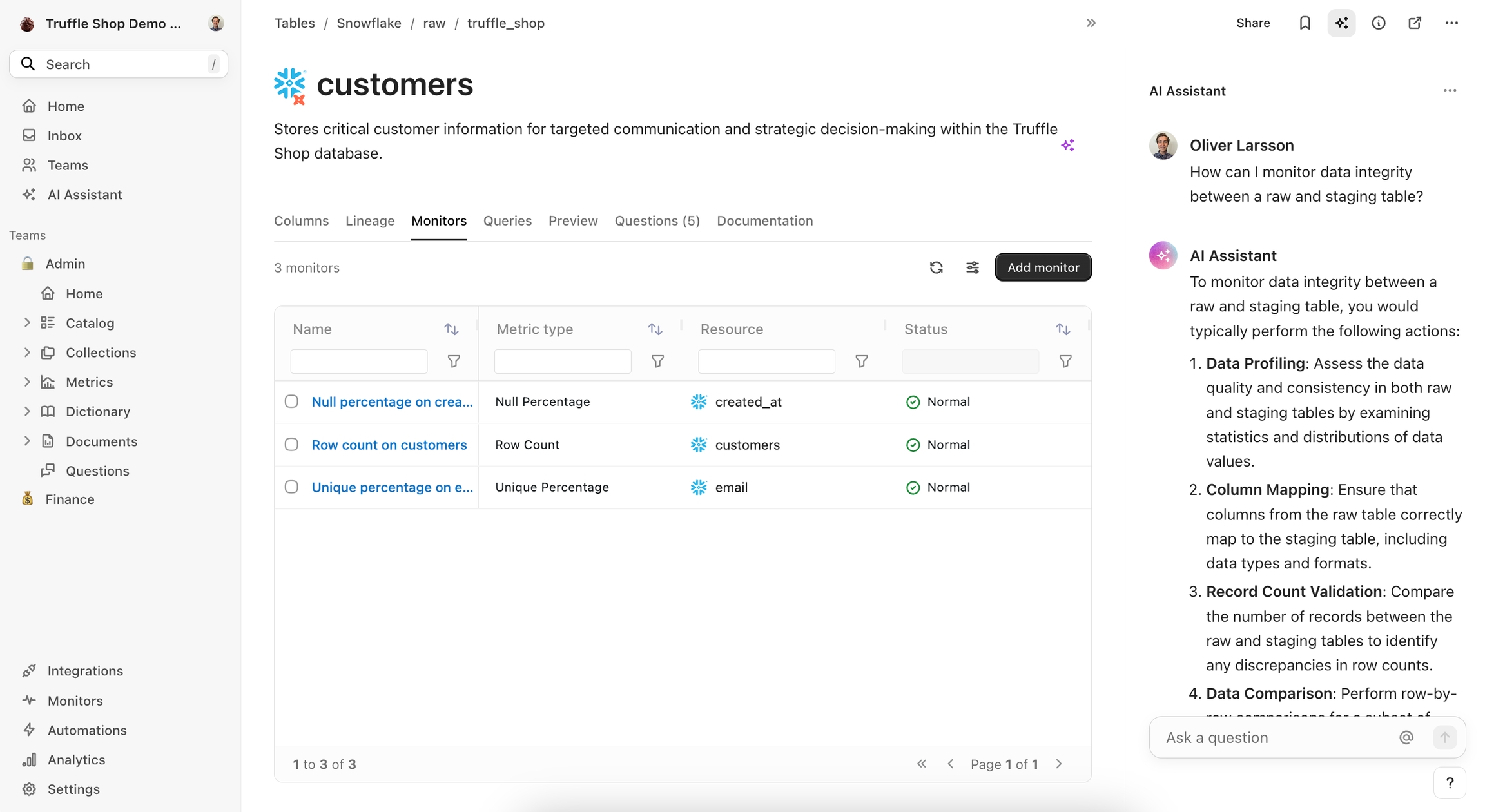
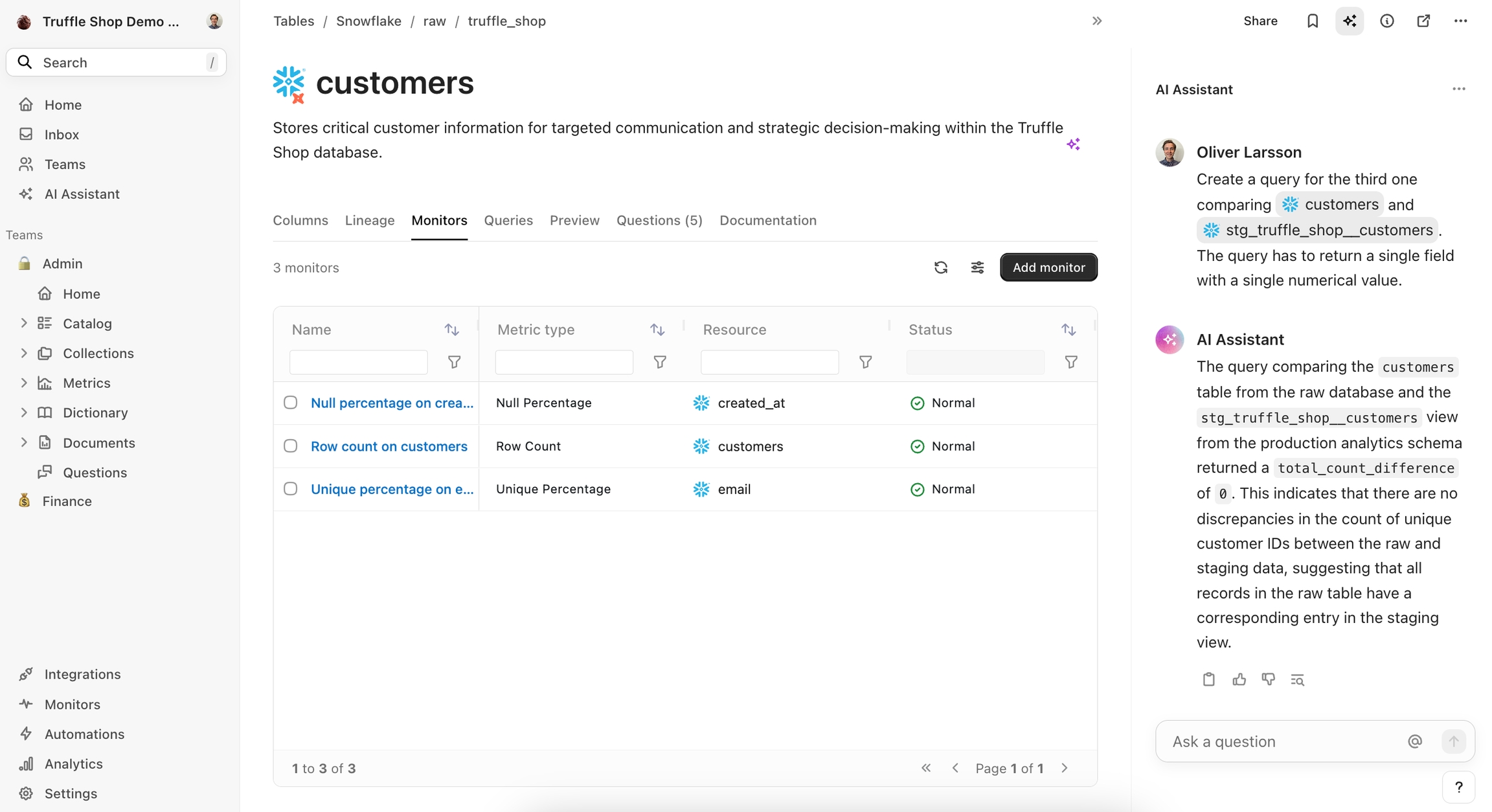
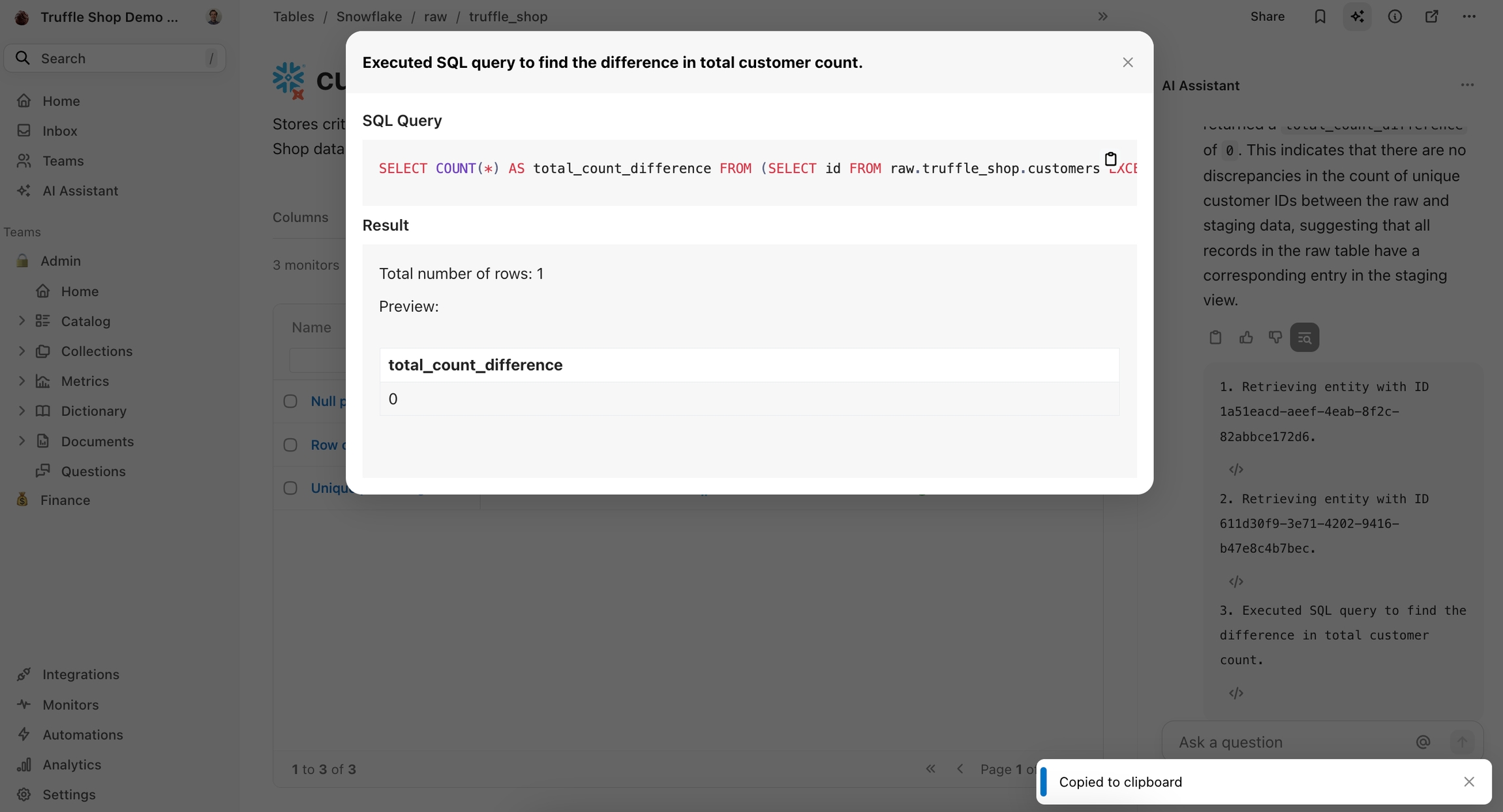
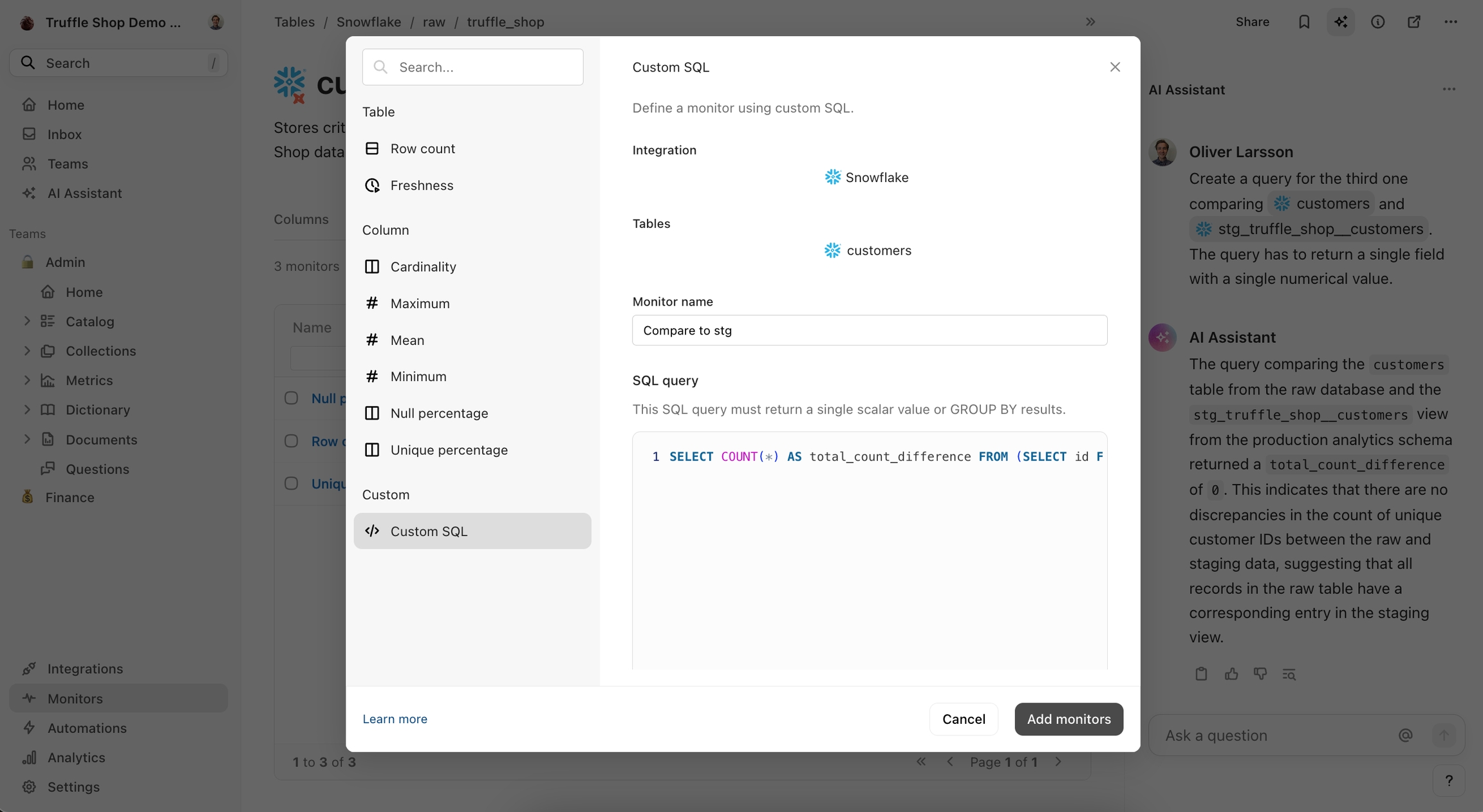
Intelligent AI suggestions
Secoda AI surfaces intelligent suggestions across your data stack, including glossary terms, monitors, and more to add to Secoda. These recommendations proactively guide users toward better metadata coverage and data quality practices, without requiring manual configuration.
How does Secoda AI do this?
Context-rich processing: Secoda AI analyzes metadata, lineage, table and column names, descriptions, past monitor logic, and usage patterns to detect where documentation or monitoring may be missing or inconsistent.
Human-in-the-loop workflow: Suggestions are presented directly in chat. Users can inspect, accept, or refine these with full transparency before publishing changes.
Benefits:
Metadata completeness: Automatically detects and fills gaps in your glossary by suggesting definitions based on the context of your existing workspace and glossary terms - ensuring that key data concepts are consistently and accurately documented.
Monitoring coverage: Recommends monitors for key tables and metrics using your workspace context and existing monitors, reducing the risk of silent data issues going undetected.
Scalable efficiency: Teams save significant time by reducing manual documentation and query writing, while retaining full control over final outcomes.
Example workflow:
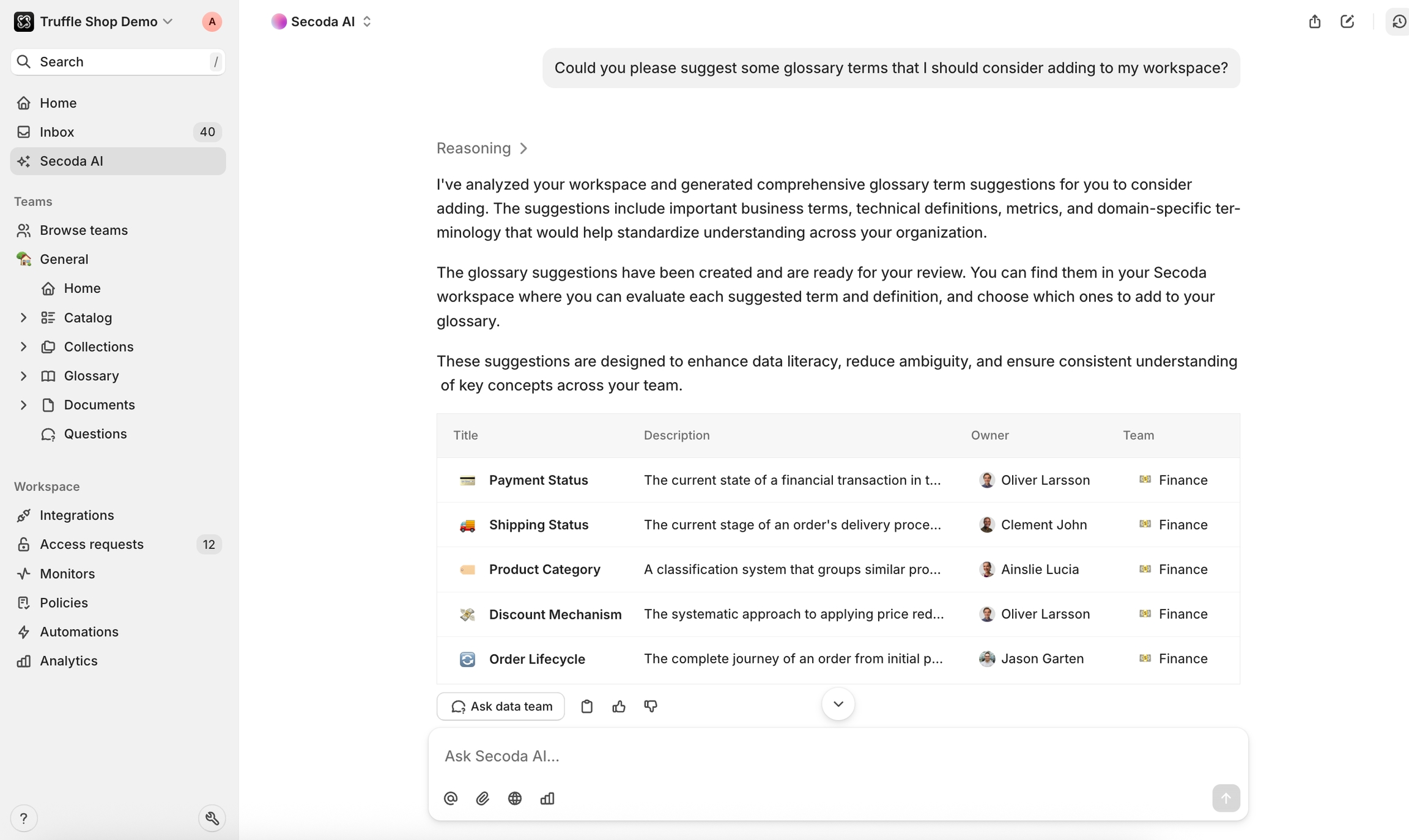
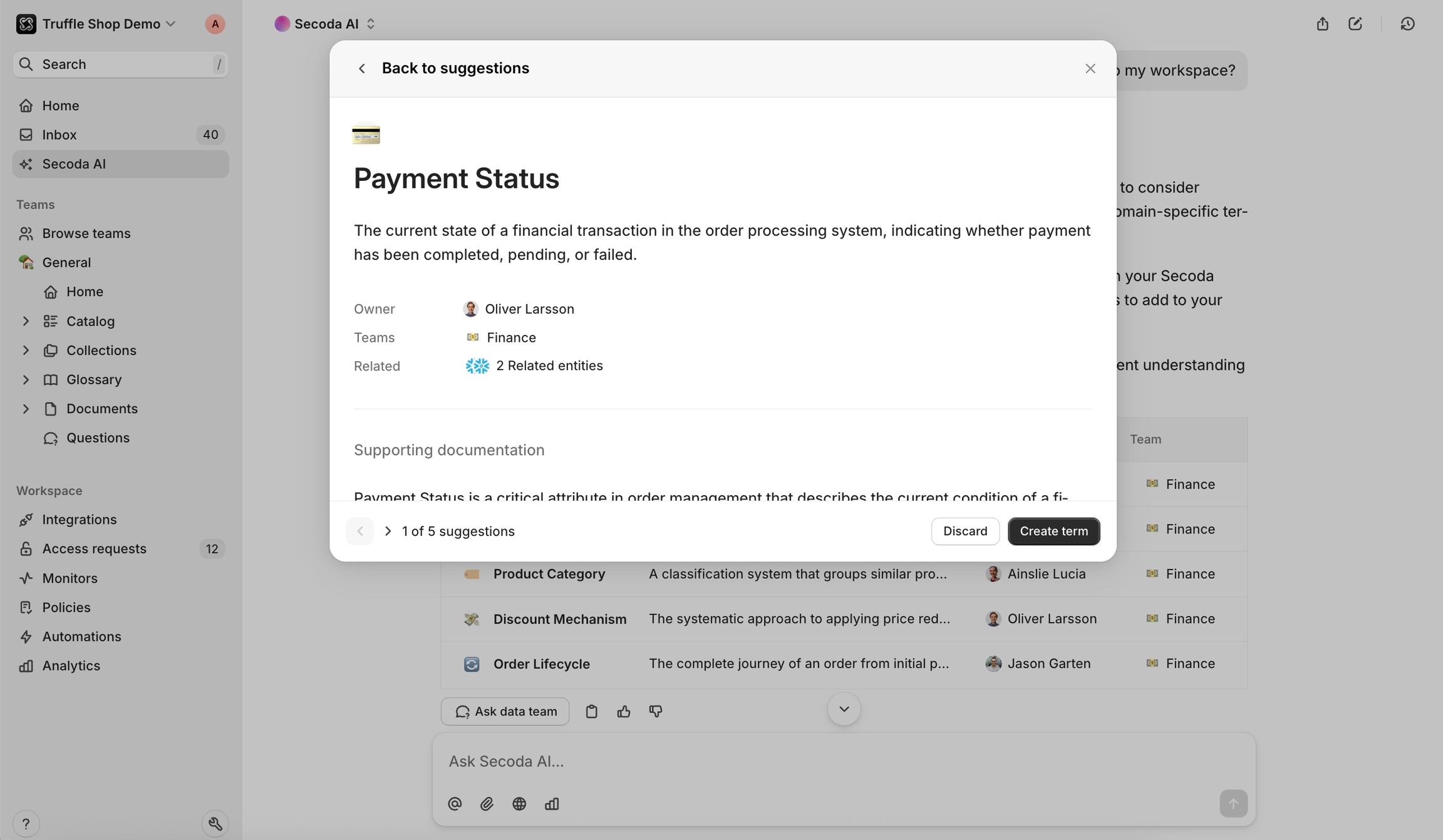
Conclusion
The use cases outlined demonstrate the AI Assistant's profound capability to simplify and democratize complex data tasks. By automating critical data operations, the AI Assistant allows organizations to maintain high standards of data governance with remarkable efficiency and ease, making sophisticated data analysis accessible to a broader spectrum of users.
Last updated
Was this helpful?